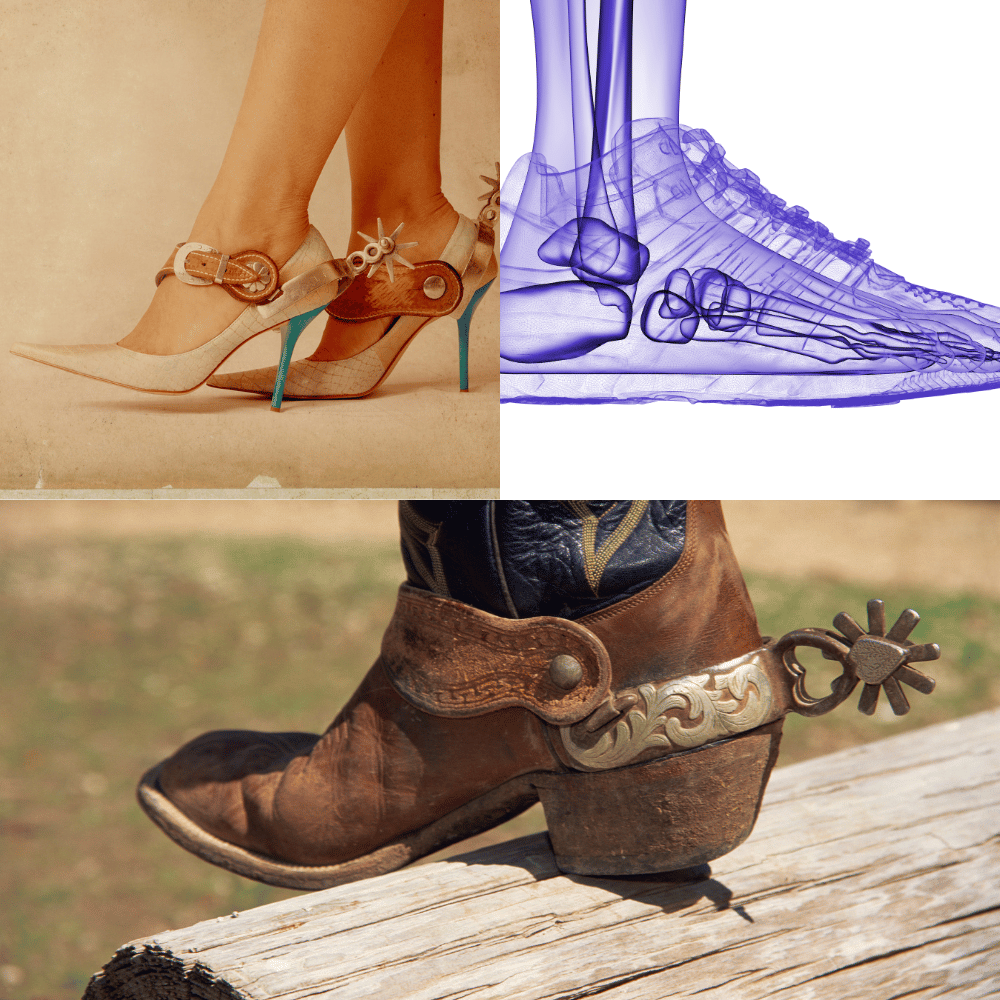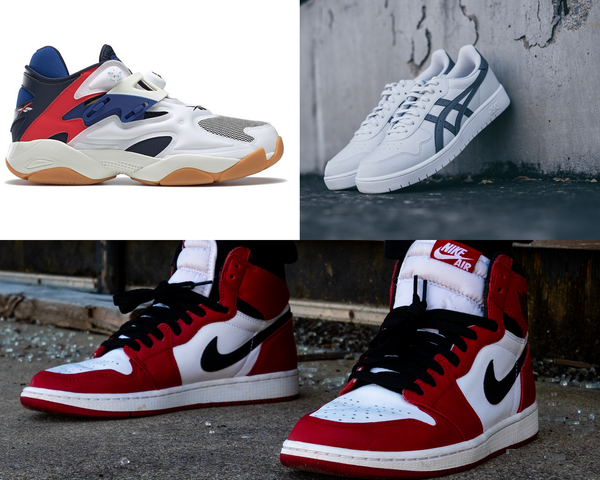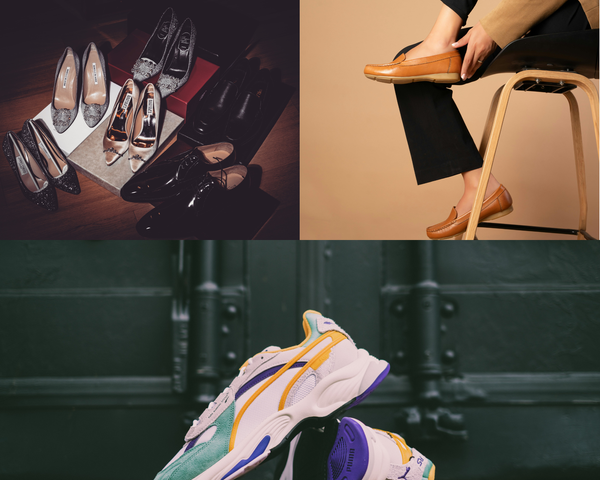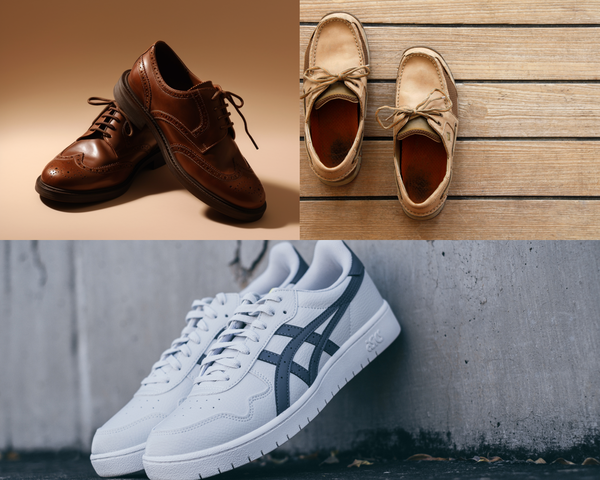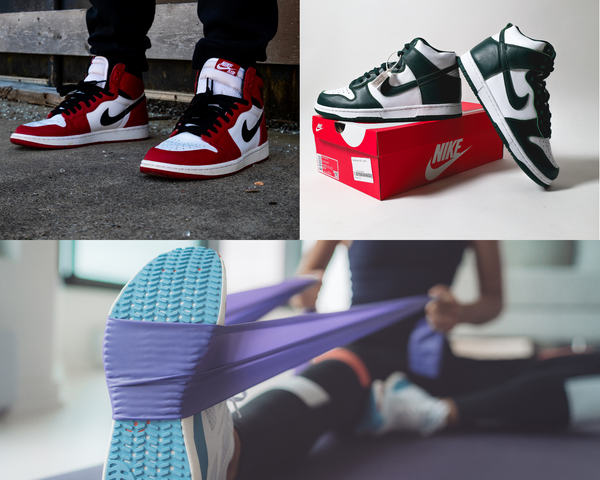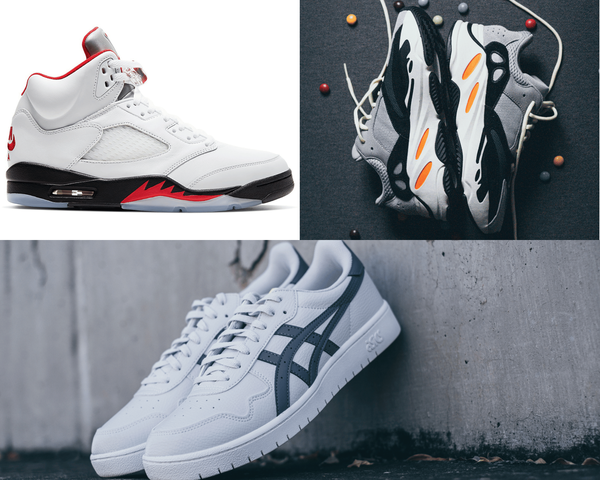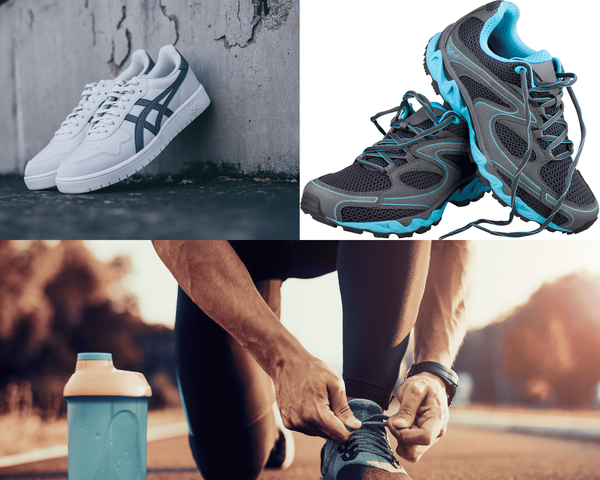Bone spurs, also known as osteophytes, are bony projections that develop along the edges of bones. They often form where bones meet each other in the joints or on the bones of the spine. These growths can cause pain and discomfort, especially when they rub against other bones or soft tissues.
Key Takeaways:
- Choosing the right shoes can significantly alleviate the pain caused by bone spurs.
- Different activities require specific shoe types to provide optimal support and comfort.
- Orthopedic shoes are often the best choice for those suffering from bone spurs.
Understanding Bone Spurs
Bone spurs, also known as osteophytes, are bony projections that develop along the edges of bones. They often form where bones meet each other in the joints or on the bones of the spine. These growths can cause pain and discomfort, especially when they rub against other bones or soft tissues.
Factors contributing to heel spurs include repetitive stress from activities like running or dancing, obesity, and wearing poorly fitting shoes. Understanding foot mechanics is crucial, as improper alignment and movement can exacerbate the strain on the plantar fascia, leading to heel spurs.
The right footwear can make a world of difference for those suffering from bone spurs. Shoes that provide adequate support, cushioning, and stability can help reduce pain and prevent further injury. Let’s dive into the best shoe types for various activities and needs.
Causes and Symptoms of Heel Spurs
Heel spurs are bony growths that develop on the underside of the heel bone, often leading to sharp pain and discomfort. These growths can be attributed to several factors, including:
- Plantar Fasciitis: This condition involves inflammation of the plantar fascia, a thick band of tissue that connects the heel bone to the toes. The constant strain on this tissue can lead to the formation of heel spurs.
- Flat Feet: When the arch of the foot collapses, it causes excessive pronation and strain on the plantar fascia, contributing to heel spur development.
- High Arches: Conversely, having high arches can increase pressure on the heel bone, leading to heel spurs.
- Excessive Pronation: This condition, where the foot rolls inward excessively, puts additional strain on the plantar fascia.
- Age: As we age, the flexibility and elasticity of tissues, including the plantar fascia, decrease, making heel spurs more likely.
- Overuse, Injury, or Stress: Engaging in high-impact activities like running, jumping, or dancing can cause repetitive stress on the feet, leading to heel spurs.
- Poorly Fitting Shoes: Wearing shoes that lack proper arch support or cushioning can contribute to the development of heel spurs.
Symptoms of heel spurs may include:
- Sharp Pain: A stabbing pain in the heel, especially when stepping or walking.
- Swelling and Redness: Inflammation in the affected area.
- Difficulty Walking or Standing: Prolonged periods of standing or walking can become challenging.
- Pain After Rest: Discomfort that worsens after periods of inactivity.
The Impact of Shoes on Heel Spurs
The type of shoes you wear can significantly impact the development and management of heel spurs. Poorly fitting shoes that lack proper arch support or cushioning can exacerbate heel spur pain. Conversely, shoes designed with the right features can help alleviate pain and prevent the development of heel spurs.
When selecting shoes for heel spurs, consider the following features:
- Deep Heel Cup: A deep heel cup helps reduce pressure on the heel bone, providing relief from pain.
- Firm Heel Counter: This feature stabilizes the foot and prevents excessive pronation, which can strain the plantar fascia.
- Proper Arch Support: Shoes with adequate arch support help distribute weight evenly, reducing pressure on the heel bone.
- Cushioning: Ample cushioning in the shoe helps absorb shock and reduce pressure on the heel bone, making walking more comfortable.
Best Running Shoes for Bone Spurs
Running with bone spurs can be challenging, but the right running shoes with ample cushioning and shock absorption can help. Look for shoes with ample cushioning to absorb shock and reduce pressure on the affected areas. Brands like Brooks and Asics offer models specifically designed for runners with foot issues.
Additionally, consider shoes with a wide toe box to prevent squeezing and further irritation of the bone spurs. Orthotic inserts can also provide extra support and comfort, making your runs more enjoyable and less painful.
Best Walking Shoes for Bone Spurs heel spurs
Walking is a low-impact exercise that can be beneficial for those with bone spurs, but only if you have the right shoes. Walking shoes should offer excellent arch support and cushioning to minimize stress on your feet. Proper arch support in walking shoes can improve foot alignment, heel area absorb shock,
reducing the strain on your feet and alleviating pain from bone spurs. New Balance and Skechers are popular brands known for their comfortable walking shoes.
Look for shoes with a flexible sole to allow natural foot movement and a padded collar to prevent rubbing and blisters. A good pair of walking shoes can make a significant difference in your daily comfort and mobility.
Best Orthopedic Shoes for Bone Spurs heel pain
Orthopedic shoes are specifically designed to address various foot problems, including bone spurs. These shoes often feature extra depth, removable insoles, and a supportive structure to accommodate custom orthotics. Brands like Orthofeet and Vionic are well-regarded for their orthopedic footwear.
Investing in orthopedic shoes can significantly improve your overall foot health by providing the necessary support and cushioning.
Orthopedic shoes can provide the necessary support and cushioning to alleviate pain and prevent further complications. They are an excellent investment for anyone dealing with chronic foot issues.
Best Dress Shoes for Bone Spurs heel bone
Finding stylish yet comfortable dress shoes can be a challenge for those with bone spurs. Look for dress shoes with a low heel, cushioned insole, and ample arch support. Clarks and Ecco offer a range of dress shoes that combine style with comfort.
Making informed footwear choices is essential to ensure both comfort and style without exacerbating bone spur pain.
Avoid narrow or pointed-toe shoes, as they can exacerbate the pain caused by bone spurs. Instead, opt for shoes with a rounded or square toe box to give your feet plenty of room.
Best Sandals for Bone Spurs heel spur pain
Sandals can be a great option for those with bone spurs, especially during warmer months. Look for sandals with adjustable straps to ensure a secure fit and avoid any pressure points. Brands like Birkenstock and Teva offer supportive sandals that are both comfortable and stylish.
Supportive sandals can provide the necessary foot support to alleviate pain and prevent further complications from bone spurs.
Choose sandals with a contoured footbed to provide arch support and cushioning. This can help distribute your weight evenly and reduce the strain on your feet.
Best Sneakers for Bone Spurs
Sneakers are versatile and can be worn for various activities, making them a great choice for those with bone spurs. Look for sneakers with good arch support, cushioning, and a wide toe box. Sneakers with good arch support and cushioning can enhance foot stability, reducing the risk of pain and injury from bone spurs. Nike and Adidas offer several models that cater to individuals with foot issues.
Consider sneakers with a removable insole so you can insert custom orthotics if needed. This can provide additional support and comfort, making your daily activities more manageable.
Best Boots for Heel Spurs
Boots can be an excellent choice for individuals with heel spurs, offering additional support and stability. When choosing boots for heel spurs, look for the following features:
- High Ankle Collar: Provides extra support and stability for the foot.
- Firm Heel Counter: Stabilizes the foot and prevents excessive pronation.
- Proper Arch Support: Distributes weight evenly and reduces pressure on the heel bone.
- Cushioning: Adequate cushioning helps absorb shock and reduce pressure on the heel bone.
Some great options for boots for heel spurs include:
- Hiking Boots: Designed to provide support and stability, making them ideal for those with heel spurs.
- Work Boots: Offer additional support and protection, suitable for individuals with heel spurs.
- Orthotic Boots: Specifically designed to provide support and alignment, heel spur exercises, alleviate pain, making them a great option for managing heel spur pain.
Best Flats for Heel Spurs
Flats can be a comfortable and supportive option for everyday wear, especially for those with heel spurs. When choosing flats, look for the following features:
- Proper Arch Support: Ensures even weight distribution and reduces pressure on the heel bone.
- Cushioning: Adequate cushioning helps absorb shock and reduce pressure on the heel bone.
- Firm Heel Counter: Stabilizes the foot and prevents excessive pronation.
- Deep Heel Cup: Reduces pressure on the heel bone and alleviates pain.
Some great options for flats for heel spurs include:
- Ballet Flats: Comfortable and supportive for everyday wear.
- Loafers: Provide a stylish yet supportive option for those with heel spurs.
- Mules: Offer a comfortable and supportive choice for managing heel spur pain.
Remember, everyone’s foot shape and needs are different, so it’s crucial to try on several options and find the one that works best for you.
Importance of Proper Fit
Regardless of the type of shoe, ensuring a proper fit is crucial for those with bone spurs. Shoes that are too tight can cause additional pain and irritation, while shoes that are too loose can lead to instability and further injury.
Understanding your foot structure is crucial to finding shoes that fit well and provide the necessary support.
When shopping for shoes, try them on later in the day when your feet are slightly swollen. This will give you a more accurate fit. Make sure there is enough room in the toe box and that the shoes provide adequate support and cushioning.
Custom Orthotics
Custom orthotics can be a game-changer for those with bone spurs. These inserts are designed to provide additional support and cushioning, tailored to your specific foot shape and needs. They can be used in various types of shoes, from running shoes to dress shoes.
Custom orthotics can significantly reduce foot pain by providing tailored support and cushioning.
Consult with a podiatrist to get fitted for custom orthotics. They can assess your foot condition and recommend the best type of orthotic for your needs. This investment can significantly improve your comfort and mobility.
Avoiding High Heels
High heels can exacerbate the pain caused by bone spurs, especially in the heel and ball of the foot. They can also lead to other foot problems, such as bunions and hammertoes. It’s best to avoid high heels if you have bone spurs.
High heels can increase foot pressure, exacerbating the pain caused by bone spurs.
If you must wear heels, plantar fasciitis, bone spurs, develop heel spurs, developing heel spurs, opt for a lower heel height and choose styles with ample cushioning and support. Wedges or platform heels can be a more comfortable alternative to traditional high heels.
Benefits of Arch Support
Arch support is crucial for those with bone spurs, as it helps distribute weight evenly and reduces strain on the affected areas. Proper arch support can enhance foot comfort by evenly distributing weight and reducing strain on the affected areas. Shoes with built-in arch support or the ability to accommodate custom orthotics are ideal.
Look for shoes with a contoured footbed and firm midsole to provide the necessary support. This can help alleviate pain and prevent further complications.
Choosing the Right Material
The material of your shoes can also impact your comfort level. Soft, flexible materials like leather or mesh can provide a more comfortable fit and reduce irritation. Selecting the right footwear material can significantly impact your comfort level and reduce irritation from bone spurs. Avoid stiff or rigid materials that can cause additional pressure on your bone spurs.
Breathable materials can also help keep your feet cool and dry, heel pain, heel bone, reducing the risk of blisters and other foot issues. Consider shoes with moisture-wicking properties for added comfort.
Importance of Cushioning
Cushioning is essential for those with bone spurs, as it helps absorb shock and reduce pressure on the affected areas. Adequate foot cushioning can help absorb shock and reduce pressure on the affected areas, providing relief from bone spur pain. Look for shoes with ample padding in the insole and midsole to provide the necessary cushioning.
Gel or memory foam insoles can offer additional comfort and support. These materials conform to the shape of your foot, providing a customized fit and reducing pain.
Regular Shoe Replacement
Worn-out shoes can lose their support and cushioning, making them less effective for those with bone spurs. It’s important to replace your shoes regularly to ensure they continue to provide the necessary support and comfort.
Proper footwear maintenance, including regular replacement, is essential to ensure your shoes continue to provide the necessary support and comfort.
As a general rule, replace your running shoes every 300-500 miles and your walking shoes every 6-9 months. Keep an eye on the wear and tear of your shoes and replace them as needed.
Consulting a Podiatrist
If you’re struggling to find the right shoes for your bone spurs, consider consulting a podiatrist. They can assess your foot condition and recommend the best footwear options for your needs. They can also provide custom orthotics and other treatments to help alleviate your pain.
A foot specialist can offer valuable insights and guidance, helping you make informed decisions about your footwear and overall foot health.
A podiatrist can offer valuable insights and guidance, helping you make informed decisions about your footwear and overall foot health.
Summary
Choosing the right shoes is crucial for managing the pain and discomfort caused by bone spurs. Whether you're looking for the best running shoes for bone spurs, the best walking shoes for bone spurs, or the best orthopedic shoes for bone spurs, there are plenty of options available to suit your needs. Remember to prioritize proper fit, arch support, and cushioning to ensure maximum comfort and support.
FAQ
What are the best running shoes for bone spurs?
The best running shoes for bone spurs are those with ample cushioning, a wide toe box, and good arch support. Brands like Brooks and Asics offer models specifically designed for runners with foot issues.
Can custom orthotics help with bone spurs?
Yes, custom orthotics can provide additional support and cushioning, tailored to your specific foot shape and needs. Consult with a podiatrist to get fitted for custom orthotics.
How often should I replace my shoes if I have bone spurs?
It's important to replace your shoes regularly to ensure they continue to provide the necessary support and comfort. As a general rule, best shoe types for bone spurs, heel spurs, replace your running shoes every 300-500 miles and your walking shoes every 6-9 months.
